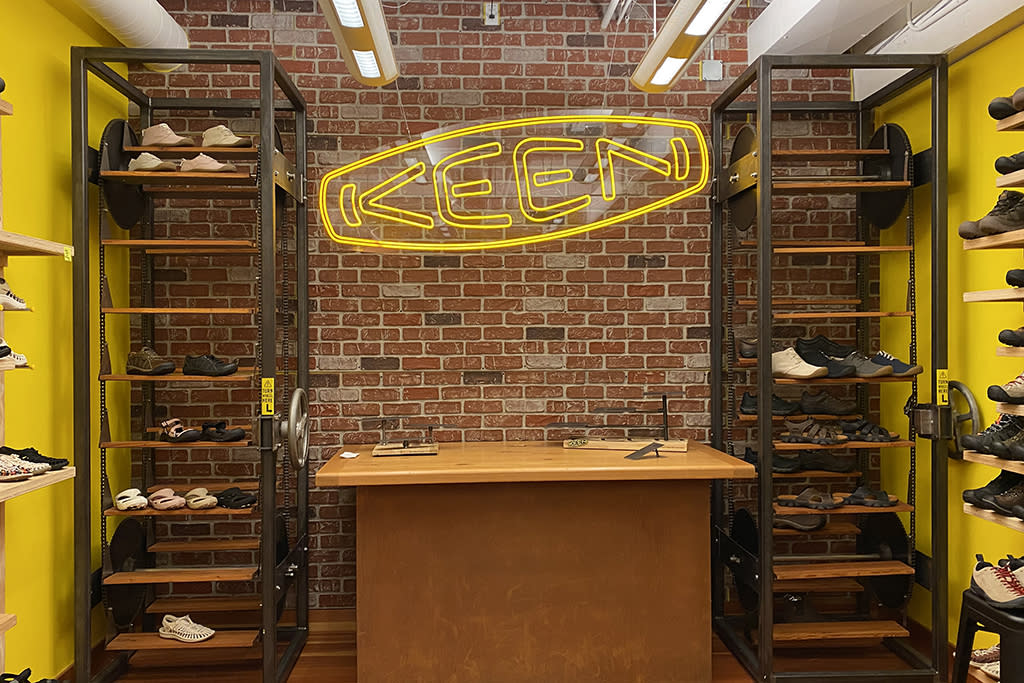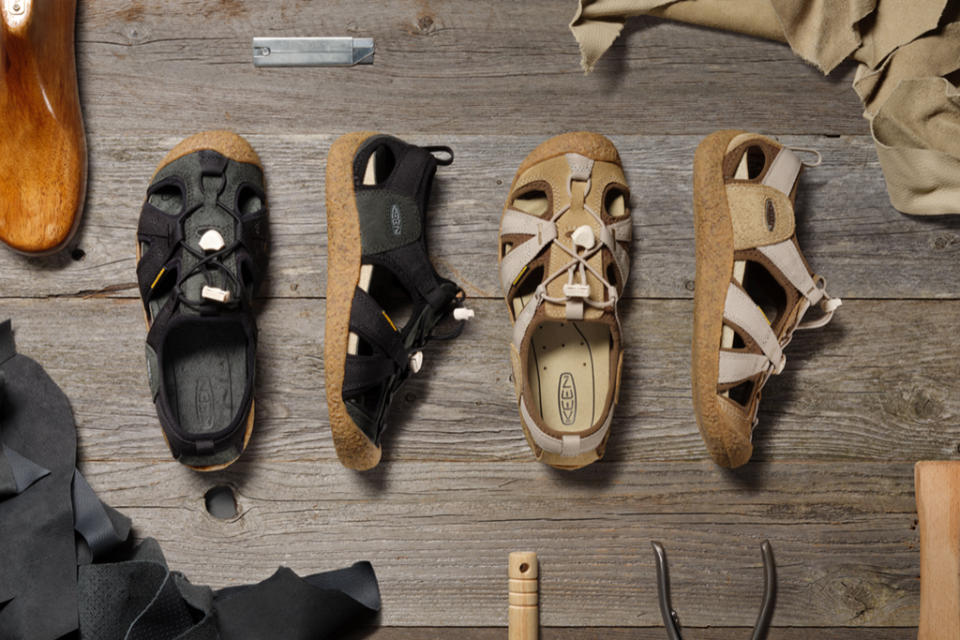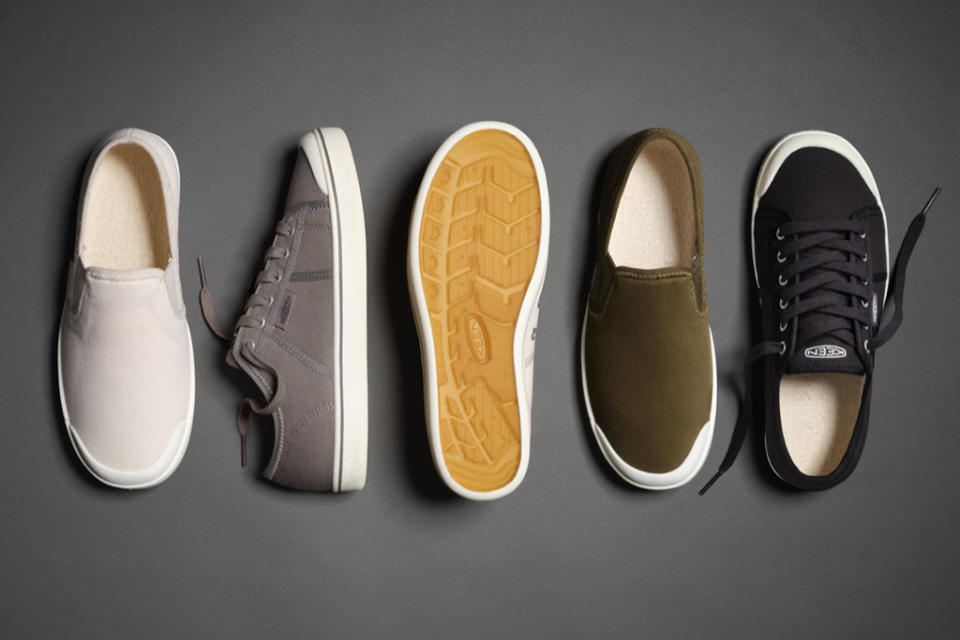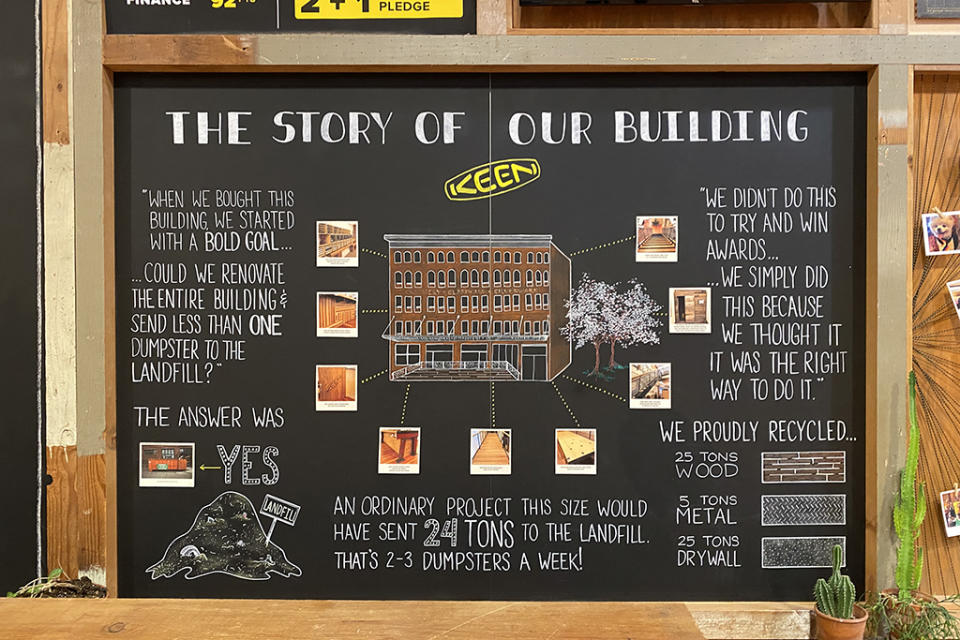How Keen Is Leaning on Sustainability and Togetherness to Rack Up Wins as it Navigates Industry-Wide Issues

With so much uncertainty disrupting the footwear industry, Keen is relying on its values to forge ahead.
Speaking with FN, Steve McCallion, SVP of global marketing and creative at Keen, explained how sustainability — as well as smart decision-making around supply chain issues and inflation — has largely driven its recent successes. And several of the Portland, Ore.-based company’s purpose-driven efforts have resonated widely.
More from Footwear News
How Fashion and Footwear Brands Are Supporting Ukraine Amid Russian Conflict
Keen Makes $55,000 Donation to Support Ukrainian Refugees, Asks the Outdoor Industry to Contribute
For example, Keen encouraged the outdoor industry in March to support its initiative to help Ukrainian refugees who have been displaced from their homes, a result of the Russian invasion of Ukraine. Its own commitment included a donation of 50,000 euros in both cash and products to support Ukrainian refugees at the Poland, Slovakia and Hungary borders. And in April, Keen moved its “Making Waves” partnership with Outdoor Afro and the YMCA forward, which was created to tackle the Black youth drowning crisis, by releasing a limited-edition sandal collection that raised funds for scholarships for swimming lessons.
On the sustainability front, Keen challenged brands in the outdoor space in March 2021 to be PFC-free by 2025. Doubling-down on its challenge, Keen committed 10,000 hours and spent more than $1 million to hit its own PFC-free goal. And in July 2021, McCallion revealed to FN that its Harvest upcycle waste program will be a greater focus looking ahead, which includes the creation of footwear using car seat leather.
Keen’s efforts are paying off. The brand said it experienced 30% growth in 2021, and this year, it is on pace to hit 40%.
Below, McCallion reveals how its values will lead to success in 2022 and offers insights into its supply chain and inflation strategies.
What is Keen’s strategy for the back half of 2022?
“We’re fan-obsessed, and there’s a bunch of new fans who have come into the marketplace and the outside space. The strategy is just continue to serve those fans. Keen’s about bringing people together, about outside and not outdoor — our definition of outside has changed — and Keen’s been there from the beginning. Keen hasn’t been so strictly focused on recreation. It has been about living outside. Our promise is to inspire people to live with no ceiling, and that means eating outside, sleeping outside, playing outside. Outside can be good for you, we know that, the data shows that and people need healing right now.”
Keen experienced 30% growth in 2021 and is on pace to hit 40% in 2022. What fueled this growth?
“Alignment around values and good decisions from a supply chain and operations standpoint. Before the pandemic, people were calling hike the new yoga. There were indications that folks were looking to outside as the next activity for them. The pandemic obviously tipped that. And we were able to maintain a positive position from an inventory standpoint. As inventory went through a big whiplash, we held our course. The other piece is the alignment of our values to the values that people are looking for right now. You have this self-care, we-care thing going on where people are looking outside to heal.”
Up to 40% of Keen product is produced in company-owned factories. What benefit does this offer Keen?
“Most footwear companies are using contract manufacturers, and many of them are going to the same contract manufacturers. What that means is that someone else is running your factory. Your ability to pivot, to have an agile supply chain, is limited. In a complex environment, you’re beholden to other people. Also by owning our own, we took very stringent precautionary measures to protect our folks. We were the first ones to change our lines to building masks. The reason we started building masks was for the folks working in our factories to keep them safe. By operating this way, you’re able to maintain continuity, you’re able to be more agile and flex as far as what’s happening in the environment.”

Courtesy of Keen
The sustainability-focused Harvest program is a big deal for Keen. How will it evolve?
“Just more of it. Our goal to minimize our footprint, to reduce our footprint, is the more upcycled and salvaged stuff we use in our products, the better. We’ve been using PET stuff in their straps and things like that, and 10 years ago we did Harvest bags where we took reclaimed tarps and made bags out of them, and started working on shoes more recently with the car seat leather. When you look at car seat leather and the production of it, you have all this beautiful leather, super high-quality leather, and when you get the patterns out you have all this waste. They’re just discarding that stuff, so we’re like, ‘We’ll take it.’ And then we’ve got the bio PU, that’s agricultural waste. Think about it as corn husks and or stalks and things like this that are part of the agricultural waste system that we’ve got in our Elsa and Eldon shoes. We’re committed to growing that to a greater percentage of our product line to be Harvest. The opportunity there is to get things like our Newport with Harvest. Those are the places that we’re investigating.”
How is Keen dealing with inflation?
“The last couple of years have been pretty crazy as far as doing business. Adding inflation to it was just another component. We’re fighting on multiple levels. One level is from a factory standpoint. How can we innovate? How can we adapt to find ways to reduce the cost of the product without reducing the quality of product? There is a lot of de-featuring going on right now. People are saying, ‘I’m going to de-feature my specs in order to keep my margins going. We’ve had a couple of price increases over the last year but we’re dealing with on the innovation side of things, trying to innovate so we don’t have to raise our prices. It’s our intention to provide value to our fans at a price they can afford. Does it mean we start making cheaper goods? Devaluing our goods? No way, because they look to us to buy things that last a long time.”

Courtesy of Keen
How has Keen worked to mitigate the impact of the supply chain backlog?
“It goes back to 40% of our factories that we own, we have more and more control over that. Our leadership team practices agile methods. Together, we believe that these things are just problems to be solved and that if you’re innovative and working well together as a team you can sort your way through it. We’ve been able to mitigate a majority of that stuff, but it’s not been without a tremendous amount of energy. The untold story of people that have product in the marketplace is everything they did to get that product in the marketplace. The amount of energy our crew does on the supply chain side of it is immense. Everything from not panicking and pulling all orders to having the relationships with the factories, maintaining those relationships. There are challenges, obviously, to the global supply chain piece. We’ve been out of China for six or seven years, meaning factories. Components come from different parts of the world, sometimes some components come from there, but our exposure is extremely minimized from decisions that were made a long time ago. It’s all solved with agile Keen-work — teamwork but better. But there’s still no rest for the weary here. This is the most intense environment that you can be operating a business in.”
How has consumer outreach and behavior changed? And how will it continue to change?
“Everybody went into their phones even more than they were before. Physical retail spaces played less of a role, events played less of a role, physical environment played less of a role and everything went digital. At the same time, privacy features, trackability features changed, so the efficiency of advertising digitally dropped off considerably. And competition has increased considerably in that space. There’s a saturation of things in that space, and you’re seeing folks who are addicted to the feed but also exhausted by the feed and not responding to it anymore. That stuff is not going to go away, but I also think that there’s room for more meaningful ways to engage with the fan. And before, outdoor was intimidating. I think the positive aspect of the pandemic was everyone got to go outside. You had people going outside and never been outside before. People were just like, ‘I just want to get outside. We’re going to stir crazy and we want to stay outside.’ That, combined with a mental health crisis that’s broader, a global existential crisis. We see it as the real pandemic being social media, and that the enemy is the algorithm and it’s divisive and rips people apart. People are beginning to realize aspects of that, and with a little help, we can help that more people realize the truly scientifically proven aspects of being outside, the ability to decrease anxiety, fix PTSD, ground you, connect to all those types of things to really take hold. Before, outdoor was about achieving, it was about bagging a peak or conquering a rapid. The mindset has totally changed. Brands that authentically understand that and understand how to speak to that is very important.”
How will the virtual and live worlds pan out? What will change forever with the digital world?
“One thing that has changed forever and will not go back no matter how many people try to make it so is the way we work. That has changed forever, and some places are trying to deny it. That doesn’t work. Remember the images where there used to be a big room in a grid with typewriters and people sitting there like it was a typing corps? They went away. People have this notion that work can’t change. Well, work did change. We were still just working in old ways. And the whole metaverse, we’re exploring what that means and what that looks like and what’s an authentic way for us to participate in it. For us, it would be in the context of having it augment our values and what we’re trying to achieve. If we can augment people getting outside and connecting and having together moments, those are the things that we’re exploring. If it can augment the way that we track where materials come from so we can assure the supply chain is clean and we can reduce the carbon footprint of everything that we make, which is what blockchain can do. It can allow us to do that, and that’s exciting.”

Peter Verry
How is Keen approaching its return to office plans? And how is this evolving?
“We’re going with a phased approach. We’re treating it like smog alerts because you don’t know. Everyone is like it’s post-COVID. I don’t know, wait to the fall to see. There’s been discussions around do you try to have a three day on, these days off or whatever. Some people call that hybrid. When we talk about hybrid, we mean work with no ceiling. Some people to get their work done need to have interactions with people, from a collaborative space, so it changes with the work. When you have a strong culture, you have a strong mission, a promise of what you’re trying to do, it becomes easier that you don’t have to regulate that kind of stuff.”
Best of Footwear News
Celebrate LGBTQ Pride Month With Gear From Brands That Give Back
These Are the Big Mistakes People Make When Shopping for Walking Shoes
Are the New Allbirds Tree Flyer Running Shoes Worth it? We Put Them to the Test.
Sign up for FN's Newsletter. For the latest news, follow us on Facebook, Twitter, and Instagram.

